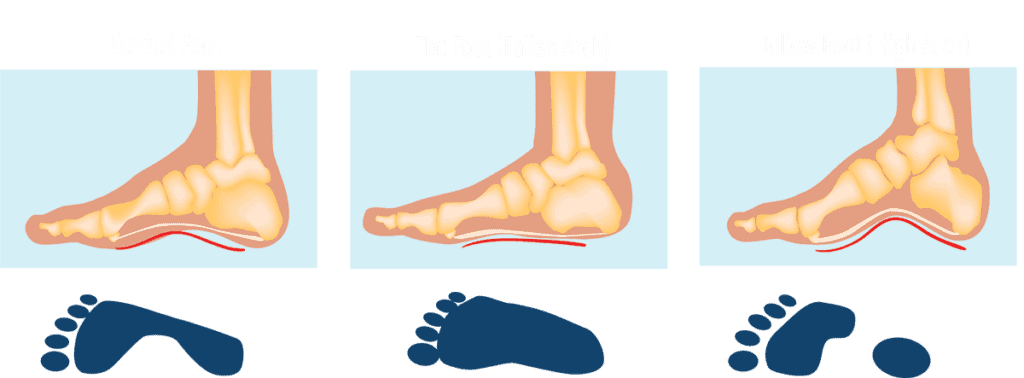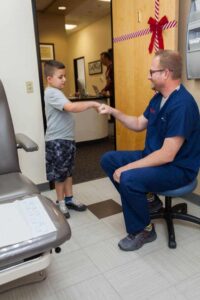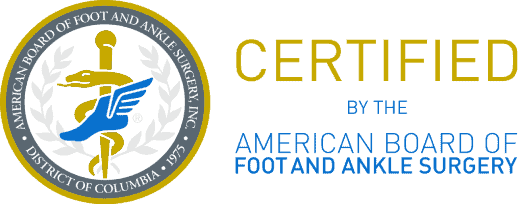Pediatric Bunions Treatment
Symptoms, Causes and Treatment of Children's Bunions
What are Pediatric Bunions?
A bunion, also known as ‘Hallux Valgus,’ is a bony-like bump that develops where the big toe joint is attached to the rest of the foot. Bunions in children are somewhat different than bunions in adults.
While adults can have extra bone overgrowth inflaming the bunion, this is not necessarily the case in children. Instead, children and teenagers often have structural complications where the bones tend to be pointed in too much, causing the cartilage of the big toe joint to move. This makes the big toe lean over towards the smaller toes, developing a pediatric bunion. Bunions tend to occur mostly among young teenagers, especially girls between the ages of 10-15.
Bunion Treatment for Children
What Causes Bunions on Children's Feet?
Bunions are a condition that is inherited in families. A common misconception is that bunions are caused by tight fitting footwear. Although some foot types are more prone to bunions, and narrow, pointed-toe footwear can trigger them, the condition was most likely already present. If your child has a bunion, they could be wearing shoes that are either too tight, have a narrow toe, or have a heel on them. While wearing heels does not cause bunions, it can make symptoms appear sooner.
Shoes can also be the cause of other foot issues such as corns, calluses, and hammertoes. Unfortunately, girls and children with flat feet are more likely to suffer from pediatric bunions and foot problems. Children with cerebral palsy are also more likely to develop bunions.

Symptoms and Diagnosing Pediatric Bunions
Symptoms
The symptoms of a pediatric bunion are:
- Swelling at the base of the big toe
- A sore bump
- Pain when wearing shoes
- Discomfort when walking (with or without shoes)
- Numbness or burning sensation
The symptoms of bunions may also be similar to other medical issues. So if your child is experiencing any of these uncomfortable symptoms, schedule an appointment today with our pediatric podiatrists or your doctor.
Diagnosing
At the appointment, an examination will be performed by one of our podiatrists. The podiatrist will do a careful physical examination of the child’s foot. This will involve looking at the:
- foot alignment
- weight-bearing alignment
- walking alignment
- movement of the affected joint
The podiatrist will also need to know what kind of shoes the child wears and establish if the pain is caused due to particular activities the child participates in. An x-ray can also be used to determine the severity of the damage and toe joint deformity.
Pediatric Bunions Treatment Options
Non-invasive treatments generally work well to treat bunions. Non-surgical options include:
- Cold compress: To reduce pain and inflammation.
- Modifying activities: Particularly when standing or walking for long periods.
- Cushioning: Placing pads over the bunion to cushion and reduce pain.
- Splints: To reposition the big toe to help relieve pain.
- Medication: Taking anti-inflammatory drugs, like ibuprofen, to manage swelling and discomfort.
- Changing shoes: Switching to shoes that fit correctly and don’t compress the toes.
The podiatrist may also recommend custom orthotics to relieve pressure on the bunion.
In some cases the child may require bunion surgery.
The Importance of Seeing a Pediatric Podiatrist
If your child is suffering pain from a bunion, and it is enough to stop their regular activity, it is time to discuss treatment options. There are numerous treatments available, each intended to relieve the pain associated with bunions. A pediatric podiatrist has the training and expertise needed to ensure proper diagnosis and treatment. Schedule an appointment with Dr. Jarman by calling (480) 534-7220 today. You may also schedule an appointment via our Zocdoc page.

Pediatric Bunion FAQ's
Bunions in kids are often caused by excessive foot pronation, abnormally shaped bones at birth, injuries, wearing narrow-toed shoes, or conditions like arthritis or neuromuscular disorders. Family history can also play a role.
Bunions most often develop during adolescence around ages 10-15 when the feet are growing rapidly. But they can also occur in younger children due to congenital foot abnormalities.
Symptoms include a bony bump on the base of the big toe, redness, pain or soreness, stiffness, and difficulty finding proper shoe fit. The big toe may angle toward the second toe.
Nonsurgical options like wider shoes, bunion pads, custom orthotics, and icing or medication for pain are tried first. If the bunion is severe or causes disability, surgery to realign the bone and tendons may be required.
Wearing properly fitted shoes with a wide toe box and avoiding narrow, pointed styles can help prevent bunions in kids with no congenital foot deformities. Prompt treatment of foot injuries and conditions causing pronation or joint laxity may also lower risk.
Your Child's Feet Are Designed For Life



